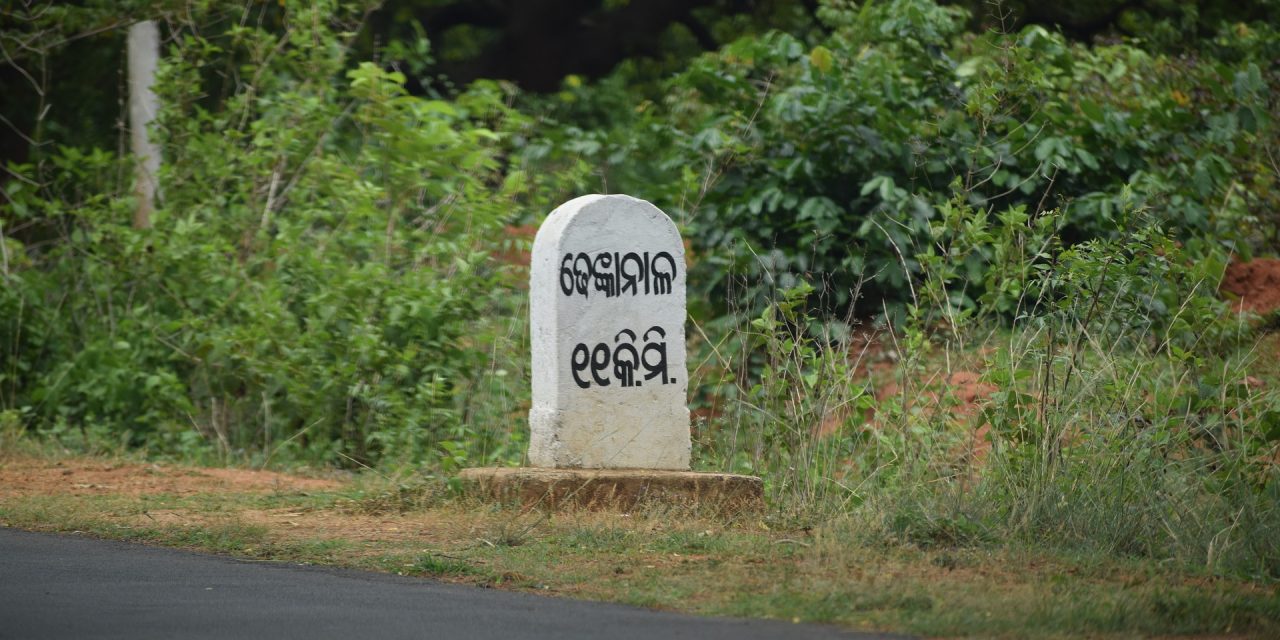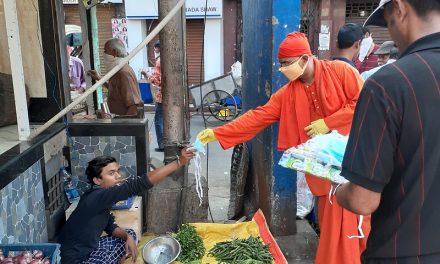London: Aparajita Sarangi, former 1995 IAS cadre, has joined hands with BJP and entered the political arena of Odisha with a loud and clear message that it’s time for Odisha to change and move beyond its associated tagline of poverty and backwardness. Her message intends to awaken the soul of this state and demand what it truly deserves. The famous words of Biju Patnaik about Odisha being a rich state with poor people holds true even today. The current ruling government, BJD, led by Naveen Patnaik in spite of being in power for close to two decades seems to have done little to change that. A closer analysis of this state would display a lack of concerted efforts by the current government to unlock the vast potential of its land, resources and people.
The key issues plaguing the state are:
- Farming distress –The agricultural sector has been in dire straits from time immemorial in Odisha and it is worrisome as it provides employment to more than 62% of the state’s population. While their contribution to the state’s GDSP has reduced from 67% in 1951 to 20% now, the number of people dependent on it hasn’t changed. The sector’s performance relative to its potential is low. It recorded a CAGR of a mere 2.8% during 2011-17, lower than the national average and much lower than top performer states like Madhya Pradesh which recorded a CAGR of 14%. The agricultural productivity is low when compared to the national average and its neighbouring states as seen in the table below.
Average Crop Yields (ton/ha) 2016-17
| Crop | Odisha | Andhra Pradesh | Madhya Pradesh | Telangana | West Bengal | India |
| Paddy | 1.49 | 3.47 | 1.75 | 2.91 | 2.89 | 2.40 |
| Pulses | 0.55 | 0.30 | 0.94 | 0.77 | 0.97 | 0.79 |
| Wheat | 1.33 | na | 2.98 | 1.40 | 2.68 | 3.20 |
| Potato | 12.00 | 14.92 | 20.07 | 25.96 | 26.16 | 21.51 |
These metrics highlight the state government’s incompetency and inability to address the following:
- Inadequate irrigation facilities and higher dependency on vagaries of weather – in spite of having more water resources than many other states, only 34% of the total irrigation potential of 5.5 million ha has been developed. Total cultivated land amounts to 8.7 million ha
- Low crop diversification efforts towards horticultural and commercial produce (rubber, coffee, sugar) which could bring in better remuneration; Odisha Economic Survey of 2017-18 reports the areas under spices, vegetables, fruits, and floriculture – a proxy for diversification – declined by 20 percent, 6 percent, 9 percent and 12 percent, respectively, between 2014 and 2017
- Low electricity consumption of agriculture sector
- Low cold storage facilities – 23 lakh MT, compared to Andhra’s 17.29 lakh MT, Bihar’s 14.17 lakh MT, and Gujarat’s 25.7 lakh MT
- No sustainable farm credit policy – presence of money lenders who exploit the farmers and charge interest rates as high as 40%
- Farmers unable to procure good quality seeds, fertilisers and pesticides; supplied with lower grade of the same from the government
- Increasing farmer suicides – crop loss, drought and debt burden have been the cited reasons. 78.7 % of marginal farmers are in debt compared to the all-India figure of 48%.
The various schemes of BJD including the latest KALIA scheme are welfare schemes which provide short term relief in terms of interest free loans or short term financial aid but fail to equip and develop the sector to be sustainable in the long term. Navnirman Krushak Sangathan (NKS), an outfit fighting for the farmers’ cause, vehemently condemns these schemes. They also stress the need for pensions and crop insurance for farmers which the state government has plainly ignored.
- Mining industry – The land of Odisha is rich in mineral resources wherein it constitutes 98% of all India reserves for chromites, 95% for nickel, 70% for bauxite and about a third of India’s reserves for manganese, iron ore, coal and mineral sand. But the richness of land hasn’t translated to a better standard of living for the people of Odisha.
In various measures of Human Development Index (HDI) Odisha remains in the bottom five among other states and union territories of India and specifically the mineral resource rich districts like Keonjhar, Koraput, Sundargarh, Jajpur, etc. display lower levels of HDI. While minerals worth thousands and thousands of crores of rupees are being extracted from these lands, the sad state of education, healthcare, infrastructure portrays a different picture. When the countries in the middle east discovered oil and natural gas, their economy changed and their citizens who were originally tribals benefited from it . But the tribals of Odisha haven’t seen their livelihood change. Hence they oppose the mega investments and developmental projects. They are rightly questioning at whose cost and for whose development are these projects being undertaken . The government of the day has had a mandate for close to two decades but has failed
- to be a conduit and allay the apprehensions about industrialization and development
- to develop a sustainable development framework which takes into consideration their socio-ecological and cultural concerns. The locals should be able to participate and benefit from the mining resources.
- To value add on the vast resources found by encouraging manufacturing set-ups which would provide more employment and make the GDSP (gross domestic state product) more robust.
This inefficiency in the government was clearly illustrated when it failed to translate big FDI intents of POSCO, ArcelorMittal and Uttam Galva into flourishing projects that would have improvised and modernised large mining parts of Odisha.
- Unemployment crisis – Odisha has seen very slow pace of industrialisation and as a result job creation has been minimal. The number of people in the organized sector has declined from 7.54 lakhs in 2005 to 5.93 lakhs in 2015. It also failed to develop itself as an IT hub when there were early signs of many IT companies like Infosys and Satyam seeking to establish themselves in the state. The farming sector is unable to provide a sustainable means of living as a result of which there is significant migration of young men and women to other states for low-paid jobs like construction workers, plumbers, electricians etc. thus squandering the demographic dividend of a youthful population.
The Make in Odisha initiative in 2016 was expected to garner investments close to Rs 2 lakh crores with an intended potential of creation of 1.4 lakh jobs. Big industry stalwarts in mines and minerals sector, petroleum, food processing, tourism and hospitality, etc had promised big investments in the state as part of this initiative. The promises made have failed to translate to concrete actions in the intended direction. The CMIE-BSE employment survey shows Odisha’s unemployment levels have worsened to 6.7% in Q1 2018 from 4.7% the previous quarter. There are two other factors that contribute to the severity of these figures – one, unemployment rate among jobseekers with no education stands at 18.5% vs 1.27% nationally and two, the unemployment rate worsens with higher education. The people of a resourceful state like Odisha shouldn’t be looking to move to other states to make a living and the fact that they are underlines the government’s inability to make Odisha a productive state. In November 2018, the state government came back with another Make in Odisha initiative with larger commitments and job creation potential. Such announcements and planning are now being perceived as publicity stunts with no on-ground implementations.
- Lack of intent for poverty alleviation: Aparajita Sarangi was part of the MGNREGA programme for alleviation of poverty in India before she quit to be part of mainstream politics. She visited 25 states and 450 zillas as part of the programme and she indicated when compared to the other states Odisha government’s inability to properly utilise the funds for the upliftment of the poor was apparent. It could hardly spend Rs 2000 cr per annum from the MGNREGA funds as opposed to neighbouring states like West Bengal, Andhra Pradesh and Chhattisgarh which spent Rs 6000 cr, Rs 5100 cr and Rs 3000 cr respectively. Its schemes are directed more towards crediting money into people’s accounts and other freebies. It fails to establish concrete plans and associated infrastructure that would equip people to be more productive and increase their income avenues. Odisha continues to remain poor with the latest report from state government in 2016 stating 66% as poor and deprived. One wonders if such sustenance is being used as a political gimmick for the doles that this government is famously known/accused of.
In such a scenario, BJP is making inroads as was evident in the recent panchayat polls in early 2017. Its vote share increased to 36% from a mere 4.2% in 2012. BJD on the other hand got decimated from 76.5% in 2012 to 54% in the recent polls. BJP’s significant improvement was attributed to a lot of ground work being done in expanding its foothold in various constituencies in recent years as opposed to BJD’s Naveen Patnaik being inconspicuous in action noticeably for the 2017 Panchayat elections.
Dharmendra Pradhan, who orchestrated BJP’s win of 31/40 seats in Bihar in the 2014 Lok Sabha elections, is at the forefront of this change. He is now a regular fixture in Odisha and is actively involved in party activities like engaging with the electorate and building relationships. He is the man responsible for implementing the Pradhan Mantri Ujjwala Yojana (PMUY) and Pradhan Mantri Awas Yojana (PMAY). The implementation of these schemes have borne fruit particularly in the Kosala region in the panchayat elections where it had a majority vote share of 53.5% versus BJD’s 33%. Kosala is considered one of the poorest regions in the country.
BJP’s position in Odisha has been strengthened further by the recent addition of Aparajita Sarangi who has a reputed household name of honesty, capability and toughness in Odisha. She had demonstrated commendable work when in various positions and capacities in Odisha be it as a director of school and mass education department or as a director of Mission Shakti, a pet project of Naveen Patnaik directed towards women and child welfare development or as a commissioner of Bhubaneswar Municipal Corporation wherein the face of Bhubaneswar was changed drastically. Aparajita with her blogs, interviews and interactions with people is making the right noises which people can resonate with. BJP looks tall and strong with her addition.
To conclude, BJP could well stand to benefit from Odisha’s strong need for “Parivartana” today as:
- In 2014, BJP didn’t have many strong local faces. Today, the case is different with powerful faces with credentials to back the campaign of the narrative of “change”
- Strong anti incumbency against BJD with no succession plan post Naveen Patnaik
- BJD infighting especially when Naveen’s favoured man V Karthikeyan Pandian, a 2000 batch IAS officer, is perceived to be the driver of party’s current major decisions. It is believed that he has developed a close-knit coterie of bureaucrats who run Odisha with the district party presidents becoming irrelevant
- Talks of disgruntled former BJD leaders like Jay panda and Damodar Rout forming a separate regional party could dent BJD’s stronghold of the coastal belt of Odisha which happen to be the terrains of these leaders. Damodar Rout had recently split with BJD alleging the party of an agriculture scam worth Rs 800 crore.
- Reports of dissatisfaction of women towards BJD, who have been traditionally a strong supporter of the party, have been surfacing. Increasing crime rates against women, lower literacy rates among women and government’s decision to promote liquor in the state is not going down well with them either.
- Expanding membership of BJP and a closer relationship building with the masses –
- in December 2018 over 100 BYV (Biju Yuva Vahini) members, a youth affiliate of BJD, joined BJP
- Series of public contact programmes at village and panchayat levels like Lok Samparka Yatra, Jan Paramasara Yatra, Parivartana Yatra
- BJP’s election machinery has undertaken similar missions in last 4 years in other states such as Assam, Haryana, Manipur, UP, Tripura and Nagaland. It has managed to increase its seats in these states by 8 to 12 times. Odisha shares the same characteristics with these states i.e., 10-20 years of incumbent governments. Time to act is now.
People of Odisha will be the driving force of this wave of “parivartana” – a wave towards development and thus unleash its true potential.
Image courtesy : Pixabay

















Wow, this was usefull. Keep writing this kind of stories, you will get a lot of people to this blog if you continue writing this.
Wow, this was great. Keep writing this kind of stories, you will get a lot of people to this text if you continue doing this.
Thanks, it’s very informative
Thanks, it’s quite informative
F*ckin’ amazing things here. I am very glad to see your post. Thanks a lot and i am looking forward to contact you. Will you kindly drop me a e-mail?